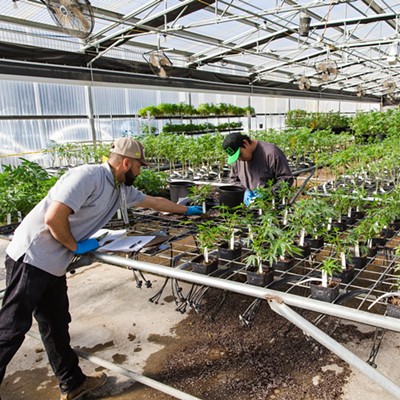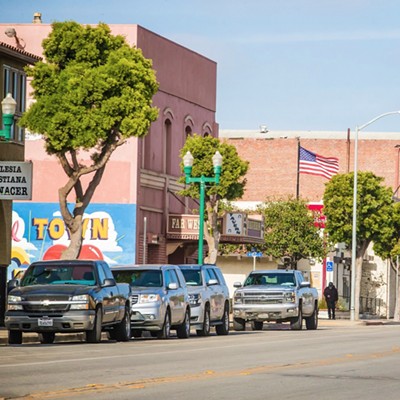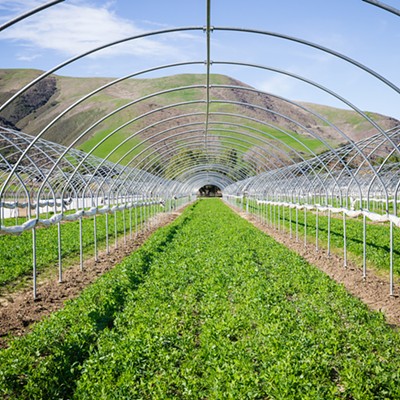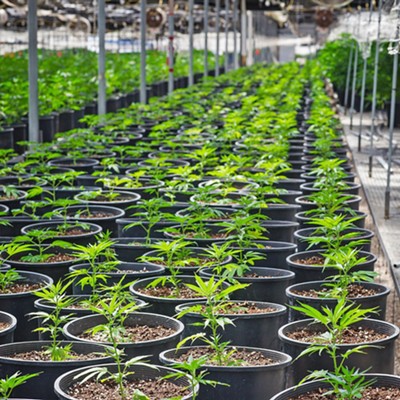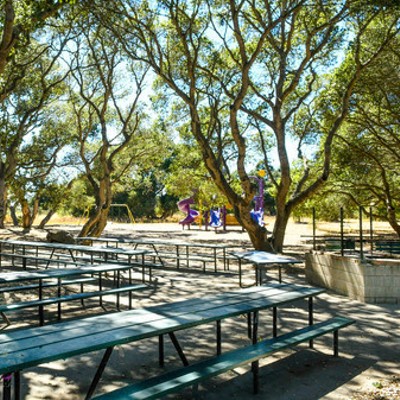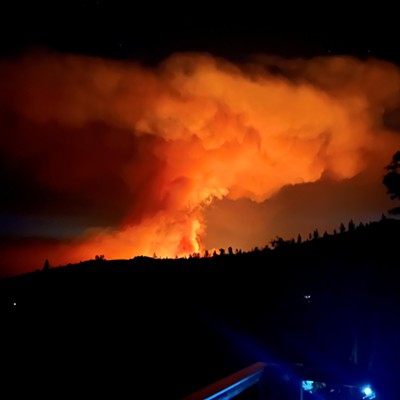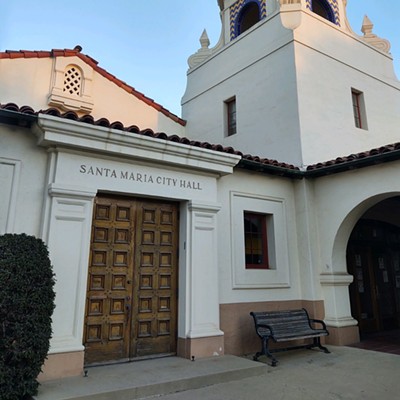From continuously changing regulations to scrutiny from some local groups and the threat of the black market, farmers at the forefront of the cannabis industry have to be adept at navigating a number of challenges.
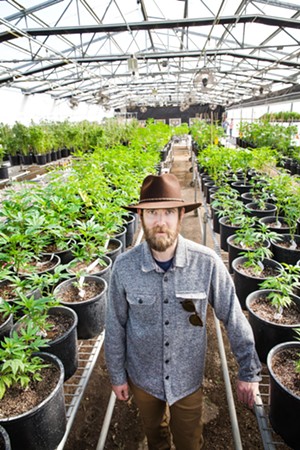
As of Jan. 15, Santa Barbara County has received applications for 218 cannabis cultivation projects totaling 2,346 acres, according to a county staff presentation during the Jan. 22 Planning Commission meeting. Only 18 of those projects have been approved and received permits. The county has approved another eight projects that are tied up in the appeals process.
After passing the county’s cannabis cultivation ordinance about two years ago, officials continue to tinker with the regulations. The Board of Supervisors passed restrictions on where cannabis can be grown in July 2019. In January, the Planning Commission held two lengthy hearings to discuss further amendments to the ordinance, with a real emphasis on limiting the odor associated with cannabis cultivation.
These local changes—which some opponents applaud and argue that more are necessary—add to the lack of stability cannabis farmers are feeling. Sara Rotman, who runs a farm just outside of Buellton with her husband, Nate Diaz, said because of the intense scrutiny involving all aspects of the industry, the couple is extremely careful when vetting potential clients.
“It’s not like a regular business where you’re like, ‘I hope he can pay his bills,’” Rotman said. “We’re like, ‘Fuck, I hope this guy hasn’t done anything completely stupid.’ … You don’t even want a customer of a customer to get looked at sideways.”
The Sun met with Rotman and Diaz, along with another owner of one of the larger cannabis farms in the Santa Ynez Valley, to talk about how they navigate these challenges and run their respective businesses. As is the case in all industries, different business owners have their own objectives as they carve out their own niches, but there are similarities.
The farmers highlight the importance of relying on sound science and data when measuring nutrient levels in the soil or the plant tissue. And this ties into their larger point, that—setting aside the politically charged rhetoric and years of prohibition—cannabis is just another plant being integrated into the county’s robust agricultural industry.
Breeding the best
John De Friel didn’t set out to become a CEO of a cannabis farm with its own brand and product line. He was about halfway through earning his Ph.D. in bioengineering at UC San Diego when he began exploring how his knowledge of DNA sequencing and genetic engineering could translate to breeding cannabis.
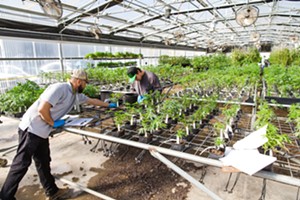
He envisioned his role as a researcher who could provide somebody else with insight into his or her crops. But when De Friel couldn’t find a partner who could grasp what he had in mind, he decided to create the position for himself.
“No one could wrap their head around what I was trying to do,” De Friel said. “So that’s when I realized I had to own the farm and do it all myself.”
In 2015, De Friel began leasing land on Santa Rosa Road in Buellton where his company, Central Coast Agriculture, grows 45 acres of cannabis on two farms about 8 miles apart. The harvested crop is frozen onsite and turned into concentrated oils at a 40,000-square-foot manufacturing facility in Lompoc. It’s then distributed and sold under the brand name Raw Garden in 600 dispensaries throughout the state.
The focus of this operation is the breeding program, which De Friel said is the largest in the world for cannabis by a wide margin. Members of De Friel’s team begin planting cannabis seedlings in the farm’s nursery in March. When the plants reach a certain height and size, they’re moved into the fields and grown under hoop houses until they’re harvested a few months later.

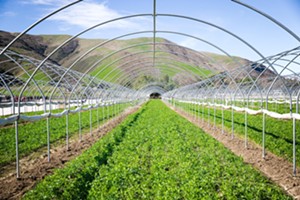
While the plants are in the field, De Friel’s team records certain measurements—such as the plant’s size or how much flower it’s yielding—and selects the plants that they deem are the best or have the characteristics they’re seeking. The plants that are selected are then used to cross-pollinate other plants that have also been selected for being superior or having specific characteristics.
The company grows a couple hundred thousand plants annually but only chooses about 1 percent for the breeding program, De Friel said. The idea is to create new generations of plants that continue to improve year after year based on the characteristics the company is trying to maximize.
“We collect 35 measurements per plant … and do this mathematical model that says which plants have all the traits we’re looking for and then those will be the ones that we plant again next year to make sure we’re improving the lines,” De Friel said.
Through this program, De Friel said the company has created 15,000 distinct varieties, or strains, of cannabis and has more than 25 million seeds that are catalogued and held onsite. The company is able to roll out products made from these different strains in small numbers every week to create a rotating menu that garners significant attention throughout the state.
“We’ve kind of created the baseball cards or the Beanie Babies of weed in that every single week we release five new strains on the menu,” De Friel said. “When we do a new release with a handful of strains, people race out to buy it because it’s all small-batch and they collect them.”
De Friel supplements his knowledge of bioengineering with years of family history in farming lettuce, celery, onions, potatoes, and apples in California, Oregon, and Washington. When starting Central Coast Agriculture, he was able to lean on his cousins who encouraged him to view cannabis as any other crop.
After visiting with and shadowing farmers in traditional agriculture, De Friel said he and his business partner, Thomas Martin, found that cultivating cannabis is akin to growing a tomato and raspberry hybrid. Based on this comparison, they decided to use equipment similar to what’s used in those industries. This includes hoop houses and plastic mulch—the black or white material that can be seen on strawberry fields throughout the Santa Maria Valley.
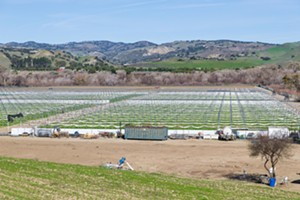
“We got the costs down to nearly comparable what a regular crop is,” De Friel said. “At the end of the day, this is going to be a commodity, and a commodity is just something that trades slightly above the cost of production.”
While De Friel views cannabis as just another agricultural crop, the plant isn’t regulated as such. It’s still federally illegal, which means he can’t ship across state lines. He’s also had to adjust to state law changes and a county ordinance that’s undergoing possible revisions, despite only being passed about two years ago. De Friel continues to operate under a state license, but he expects to receive official approval from the county soon—after numerous project revisions, he said.
But more so than the continually changing regulations, De Friel said the most significant challenge the company is facing is the black market and counterfeiters trying to illegally sell products using the Raw Garden label and packaging. He said he has to monitor the market and work with legal teams who send people cease-and-desist letters to stop counterfeiters.
“We’ve had a couple people try to knock us off out of China, and so you have to learn how to protect yourself on the international level,” De Friel said. “You have to send people to China to find the factories yourself.”
De Friel said he believes that as more legal dispensaries open throughout the state, the black market will shrink. But given how many jurisdictions prohibit the sale or cultivation of cannabis, some people will only be able to purchase cannabis through the black market until the plant is federally legalized.
Whenever lawmakers move forward with that legislation, De Friel said he believes the Central Coast will emerge as one of the more prominent areas for cannabis cultivation in the country.
“I figure it’ll take roughly 10,000 acres of production to supply all of North America,” De Friel said. “So if we can ship across state lines after federal legalization, California should be producing 80 percent of cannabis for North America, and the majority of it is going to come out of the Central Coast.”
Growing to heal
Husband and wife Rotman and Diaz purchased their more than 60-acre property on Highway 246 near Buellton to have space for Rotman’s horses and to offer her an escape from her busy work life in the branding industry in New York City. But after just three weeks of taking over the land, Rotman was in the hospital due to complications of severe Crohn’s disease that had gone misdiagnosed for years.
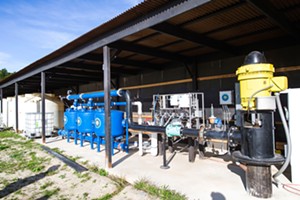
“That led us on this lengthy health odyssey, and I went through everything Western medicine offered and it made me sicker,” Rotman said.
With all of this land available, the couple decided to grow their own organic produce and raise chickens to eat to see if this could ease some of Rotman’s pain. She said these changes helped, but not enough.
After spending months in and out of the hospital, Diaz urged Rotman to try cannabis, which she wasn’t an enthusiast of at the time. Not being one for psychotropics, Rotman turned to cannabidiol—or CBD—products, so she could benefit from the plant without getting high.
After finding relief through these products that she wasn’t able to find from the drugs her doctors prescribed, Rotman said she and her husband decided to grow their own cannabis.
“We founded our collective and then prepped the whole farm to be a large-scale cannabis farm,” Rotman said. “We really thought if I’m being helped this much, we should be able to help other people too.”
The farm wasn’t in great shape when they purchased the property in 2014, Rotman said. The previous owner rented the land to broccoli farmers who drenched the ground in herbicide for nearly 20 years, which damaged the soil. To help it recover, the couple brought in chickens and goats—whose urine and feces add nutrients to the dirt—and planted cover crops.
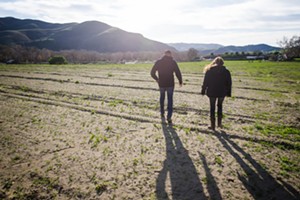
“I got a little obsessed with Joel Salatin and his idea of regenerative farming,” Rotman said. “We worked very hard to naturally rebuild our soil.”
While they worked on the soil, the couple made other improvements around the farm. Diaz planted trees along their property line to help prevent odor from leaving the farm and to keep pesticides their neighbors spray from drifting onto their cannabis. This natural screen of sycamore and pepper trees also gives the couple—who live on the property—some privacy.
Living on the farm, and always being on call, can sometimes be a bit painful, Rotman said. If security calls at 3 a.m. to inform them that a freezer has shut down, Diaz has to go out and fix it. But after spending so much time in the fields, Diaz knows the plants well.
“No one else farms it,” Diaz said. “I farm it with my guys who have been with me for five years. I’m the one up at 6 [a.m.] every day ... farming.”
This hands-on, do-it-yourself mentality is evident throughout the operation. Along with planting more than 4,000 trees on the property—including 600 olive trees a few years ago that are beginning to bear fruit—Diaz built the fence surrounding the property and installed the farm’s irrigation system himself. He said he also builds much of the equipment used for cultivation, like harvest trailers and other tools.
“We did this without any backing from anybody and through blood, sweat, and tears,” Rotman said.
Prior to becoming a cannabis farmer, Diaz worked as a contractor and helped build homes. But he grew up in a family that has grown avocados in Carpinteria for generations. He said that type of farming is too different from cannabis for any skills to translate, but that he’s “been playing in the dirt forever.”
But cannabis isn’t like growing other plants, Diaz said. It’s a high-maintenance crop that needs to be monitored closely. If it’s left alone too long and not fed properly, the plant can get stressed and flower too early, before its yield can be fully maximized.
“You have to spend years with it to know how it acts and reacts to certain things,” Diaz said.
The couple grows 22 acres of cannabis, at about 12,000 plants per acre, on their farm called Busy Bee’s Organics. All of which is sold as wholesale to about five or six different clients throughout the state who turn the cannabis into concentrated oils that are sold in dispensaries.

They grow anywhere from 12 to 25 different strains, with a focus on specific terpene profiles, each year depending on what their clients are seeking, Rotman said. Terpenes are organic compounds that a variety of plants create that often have an odor. Much of the cannabis grown at Busy Bee’s Organics has a fruity or citrusy aroma.
After a few years of selling their cannabis through wholesale transactions, the couple is hoping to begin selling products through their own brand, called Wellfounded, this spring. Rotman said that through this brand, they plan to sell topicals, supplements, and tinctures—which is how she uses cannabis.
As they roll out their own brand, Rotman said she hopes to eventually reach the point where everything they grow is used for their own products and not wholesale.
“We would love to be able to produce exclusively for ourselves,” Rotman said. “I don’t know if we’ll get there quickly, but that certainly will be ideal.”
But as the couple works on expanding the business, they’re left to navigate changing regulations at the state and local levels. The county Planning Department and Planning Commission have both approved their project, but this approval has been appealed, which means the project has to go to the Santa Barbara County Board of Supervisors.
This lack of stability is the most concerning part of working in the growing industry, Rotman said. But being at the forefront of this new field also means they have a chance to help shape its future.
“Here is this wide open palette, and if you’re willing to put in the work and suffer the brain damage, I think there’s a huge opportunity,” Rotman said.
Reach Staff Writer Zac Ezzone at [email protected].


